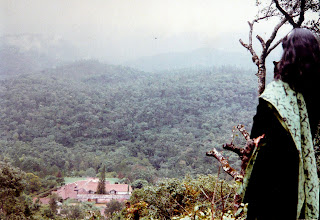Federico García Lorca and a Great Elegy

Federico García Lorca
Lorca was the foremost poet and dramatist of Spain of the 20th century. He lived only for 36 years and was shot by a firing squad in 1936, the year when the Spanish civil war started. He had no political affiliations but was known to be a friend of the leftist intellectuals and was an advocate of liberty. This was reason enough for the Nationalists of Franco’s government to do away with him. It banned his books and the intention was to obliterate his name from history of the period.
Lorca’s writings have the elements of Spanish folklore, the gypsy way of life and the surrealistic techniques of poetry. His personal life is rather controversial because of his unbecoming closeness to friends of the same gender.
Lorca had his education in Madrid when the famous painter Salvador Dali was his friend. Later, Lorca spent about 2 years in New York at the Columbia University and his inability to speak English had implanted in him a cultural shock. His book, “Poet in New York “condemns the corrupted city life with which he found difficulty in coping with.

I have translated some of the poems from this book into Malayalam. I also translated “Lament for Ignacio Sanchez Mejias” the most wonderful poem he wrote, which, after reading, affected me considerably.

Ignacio Sanchez Mejias
Lorca’s greatest poem is “Lament for, Ignacio Sanchez Mejias” written after his friend, a bullfighter. Ignacio Sanchez Mejias was a famous bullfighter who had retired from the ring with his health and fortune safely taken care. However, in 1934, he was persuaded to make a comeback as a replacement for an injured matador. It was proved a fatal mistake and he was gored to death in the bullring. Lorca was present when this gory incident happened. This experience made him write the elegy in the form of a ballad using the poetic forms he was familiar with.
This poem has been regarded by many as one of the four great elegies written in Spanish.

The eternal figure of one man facing his own fate is exemplified by Ignacio Sanchez Mejias his friend and the bullfighter.
“Now, Ignacio the well born lies on the stone. All is finished.
What is happening? Contemplate his face:
death has covered him with pale sulphur
and has placed on him the head of a dark Minotaur”
All is finished. The rain penetrates his mouth.
The air, as if mad, leaves his sunken chest,
and Love, soaked through with tears of snow,
warms itself on the peak of the herd.

My translation to malayalam 0f the above lines.
The rituals and codes of a bullfight are distinct parts of the Spanish heritage and these have been adapted to various western movies. Lorca once said that the bullfight is not very important as a game. It is a religious mystery, he felt. It reflects the public display of the victory of good over baser instincts. It is the victory of the spirit over the matter, the intelligence over the instinct and of the laughing hero over the frothing demonic form.
Those interested to hear the wonderful reading of "The Lament for Ignacio Sanchez Mejias"by John Mackenzie from the Internet Archives can do so from the following website http://www.archive.org/details/JohnMacKenzieLamentforIgnacioSnchezMejas
Dubai, 24th February 2008.




Comments